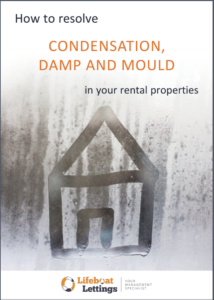
We are closely following developments in the rental crisis in Ireland. The causes of this are like the potentially emerging crisis in the UK: increasing legislation, high taxes and little or no incentives for landlords to provide rental properties. Like the UK, the Irish crisis has been in the making for many years and is due to the actions and inactions of successive governments. We can only hope that the governments here will take note of this and reverse course before a similar catastrophe occurs.
Analysis of data from the Irish rental market makes particularly grim reading. Recently released figures from October 2022 found that there were now only about 700 homes listed for rent across Ireland in August 2022. This represents approximately 20% of the numbers available between 2015 and 2019.
To give a further indication of the scale of the problem in Ireland, recent data shows a further year on year increase of 45% in landlords exiting the market in the first two quarters of 2022. The number of buy to let mortgages granted between 2005 and 2020 also dropped by a staggering 96%, from nearly 26,000 to only 800!! This means that, not only are the remaining landlords leaving the market in droves, but new ones aren’t joining.
In line with this complete disconnect between supply and demand, unsurprisingly rents have rocketed upwards over recent years and stood a further 12.6% higher year on year in August – the biggest single yearly jump since their records began in 2005. Tenants are now paying monthly rents of around €1,600.
The Irish government is therefore having to consider – and implement – different ways to help boost stock levels and incentivise landlords and governments in the UK should take note.
A summary of incentives implemented and proposed:
- A €500 rent tax credit was introduced in Ireland’s Budget 2023, to help balance this increased cost, with each tax-paying tenant not on housing support eligible.
- The government is attempting to address this affordability issue in housing – including rental properties – through its “Housing for all” strategy, launched in 2021 – by increasing housing stock.
- In 2017, the Working Group on Tax and Fiscal Treatment of Rental Accommodation Providers researched the various tax incentives that could provide a solution across the short, mid, and long term for the rental sector.
- Full mortgage interest deductibility was restored in 2019.
- A tax deduction for pre-letting expenses up to €5,000 incurred on a property that’s been vacant for 12 months or more was also introduced in the Finance Act 2017.
- The Irish government has since introduced further measures to entice landlords back into the market in its Budget 2023.
- The maximum tax deduction cap for pre-letting expenses will be upped to €10,000, and properties will also be able to be vacant for six months instead of 12 to qualify, from 1 January 2023.
- The budget also included an extension until 31 December 2025 for the residential stamp duty refund scheme, which refunds a portion of the stamp duty paid – dropping the tax to 2%, rather than 7.5% – when buying non-residential land to develop on it for residential purposes.
- Boosting the use of empty homes
This is a flavour of the woes currently being felt in the Irish rental market and an indication of some of the potential solutions being considered. With many incentives having been removed or – disincentives introduced – over the years, there are of course many options on the table for reversing this. There will also be corresponding lessons to be learned by other governments on their effectiveness.
UK based property professionals should therefore keep a close eye on the outcome of Ireland’s measures as, in the face of rising mortgage interest rates and increased legislative obligations, the UK government may need to consider similar initiatives in the very near future.




